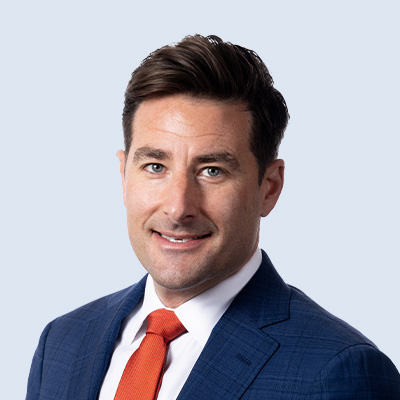John Stamos: Hello, this is John Stamos. I’m a principal at Alexander Group supporting both our technology and our industrial practice areas. And today we have Bassem Ammouri, Schneider Electric’s director of Energy Management Software in North America, to discuss the commercial trends relating to software, data and the industrial Internet of Things. Bassem, first of all, thank you for joining us. For those that don’t know, can you share a quick overview of Schneider Electric and your software offerings?
Bassem Ammouri: Sure thing. And thank you for having me and having Schneider Electric for this conversation. So Schneider Electric is the global specialist in energy management and industrial automation. We provide digital solutions for efficiency and sustainability to customers across many segments like smart buildings, like data centers, like industrials and transportation. We started about 150 years ago in the first industrial revolution making steel and industrial products, and we focused on energy over the past 100 years or so. We are at the heart of electricity 4.0, which is the connection of digital and energy, allowing folks to make the most of their energy and resources, bridging progress and sustainability for all.
John Stamos: All right. And so it sounds like you had mentioned with Industrial 4.0, the emergence and drive towards software and data leading that discussion. How is that changing the conversation with your customers?
Bassem Ammouri: The new way that our digital solutions open up for us to communicate and transact with customers is really around proactivity. So we’re joining forces with the customer much earlier in their journey. Rather than waiting for the design documents to come and hit our email inbox, and then we provide a proposal, we’re now right there with the customer during that design process. We’re helping them through our design software to create the most efficient, the most optimized, electrical design solution.
John Stamos: Interesting. So it’s leading towards more of a consultative discussion earlier in the process. How are your existing roles changing to support that?
Bassem Ammouri: So we joke at Schneider Electric about being a big grey box company. So historically, we’ve supplied leading electrical equipment, industrial automation equipment that controls and turns on and off power. Now we are 100% a software-led company. We definitely still supply the equipment, that’s a critical part of our business, and it will be. But now it’s all about connecting that equipment, gathering data from the equipment, trending that data to make better-informed decisions for how we will operate that equipment. So new roles, the seller at Schneider Electric is a digital seller. That’s number one. Number two is the way that we recruit talent is changing, and the way that we manage talent. We used to pool from traditional hardware organizations, some of our competitors, for example. Now we’re looking at majors like computer science. We’re looking at firms like the big names that you might hear about in the Silicon Valley. Those are the types of folks that we’re pooling into the company. And also through the adoption of the agile framework, right, which we’re learning from the software partnerships that we’re making. We’re applying that agile methodology to different parts of our business, which creates scrum opportunities for folks to get quick 4 to 6-month type experience, add value, pull out that experience and the lessons learned from that experience, and then take it to their next role. So the way that we manage talent is completely different, and I think it’s really attracting a lot of the top talent to our company.
John Stamos: That’s great. So it’s kind of changing where you look for talent compared to maybe some of your traditional competitors also and how you facilitate and manage that talent. What about some of the new roles that you’ve created to support the digital transformation?
Bassem Ammouri: Absolutely. So we have the methodology that everyone is a digital seller. Right. But of course, not every seller at Schneider Electric can be an expert on the vast array of digital solutions that we have. So the team that I look after is actually an overlay commercial team which acts as that software expert. We are the subject matter expert that can be pulled in by the front-line sales team to help transform the conversation that they’re having with their customers. Again, to that solution-focus that digital-first conversation. So this has been an opportunity for folks who really have an interest in software and digital to come and join a team where they get to really focus and become an expert on that.
Bassem Ammouri: The other one is the idea of customer success. As we said earlier, we are trying to partner and become a solution provider for our customers. The customer success manager is someone who manages the relationship with the customer before, during and long after that implementation of a solution, be it software, services, what have you. The idea is that this person exists as a single point of contact to drive the implementation, provide ongoing service, and then grow the scope of our relationship with that customer.
John Stamos: Interesting. So some more software added roles. The emergence of customer success, something that we at Alexander Group are seeing as well. What are some of the learnings and advice that you have around digital transformation?
Bassem Ammouri: Sure. So digital transformation is one of those buzzwords. So you’ve got to start by defining exactly what it means within the context of your business. So at Schneider, this meant transforming from a product-centric organization to a digital-first organization. For us, the two learnings and advice that I’d speak to are patience. This does not happen overnight. You have to take it slow, you’ve got to plan and then hit those key milestones along the way. There’s the people aspect of this as well. You’ve got those folks that have been with the organization for decades, and they’ve got a wealth of knowledge that can be used to lead a more successful transformation. Identify those risks early, see around those corners, harness those people as thought leaders and drivers to your transformation and take it slow. While you’re taking it slow, though, you’ve got to be deliberate and loud. So what I mean there is identify what the transformation looks like for your business, communicate it very simply in as many places as you can through your internal message boards, through your top executives and their communications internally and externally. And then when I say loud, communicate those successes. Wherever you have a success, broadcast it. Recognize those who are driving the success so you can drive replication throughout the organization.
John Stamos: Interesting. All right. Last question. Where do you see the industry going from here as it relates to the emergence of the digital transformation and the industrial Internet of Things, industrial 4.0, all that? Where do you see it going from here?
Bassem Ammouri: We’re at a super exciting point in this industry. We don’t know exactly what the future will hold, but we know some of the trends. I think the first one we mentioned before, electricity 4.0. The connection of digital and electrical to unlock the digital twin. Right. Another buzzword. So getting that data from the built environment, using that data. So that’s what we mean by digital twin. So I think we’ll see a lot more of that. Automation of processes. So the idea that we can improve the lives of those doing today very manual work, whether it be in the architectural space and the engineering space and the general contractor space, and then even into operating an environment. The automation of processes through technologies like BIM and generative design and augmented reality, all of that will continue to rise in popularity and accessibility as it becomes more perfected as a technology. And then finally, lifecycle software, the idea that all of these tools that different players along that value chain are using will be able to communicate with one another. I think those who are successful in terms of creating software that drives this transformation are going to be those who create software that’s interoperable with other software that’s already out there, already used by folks in the industry. I think that’s what’s going to drive the transformation that we’re all looking forward to.
John Stamos: Well, Bassem, thank you very much. Certainly exciting times in the industrial space. Appreciate the opportunity to chat and for you to impart your experience. Thank you.
Bassem Ammouri: Thank you.
Learn more about the Manufacturing & Distribution Practices:
Manufacturing:
How We Help
Insights
Leadership Events
Distribution:
How We Help
Insights
Leadership Events




